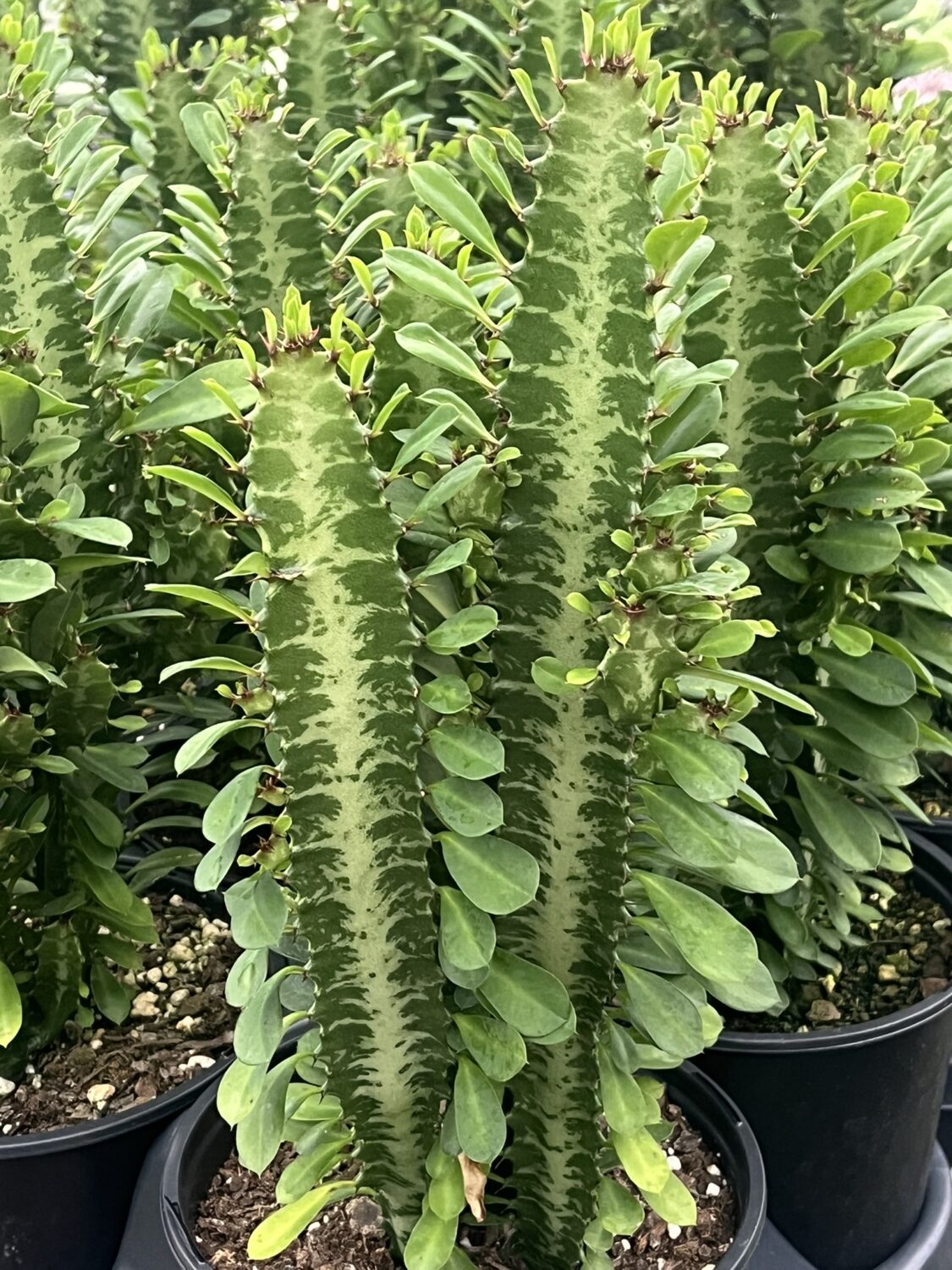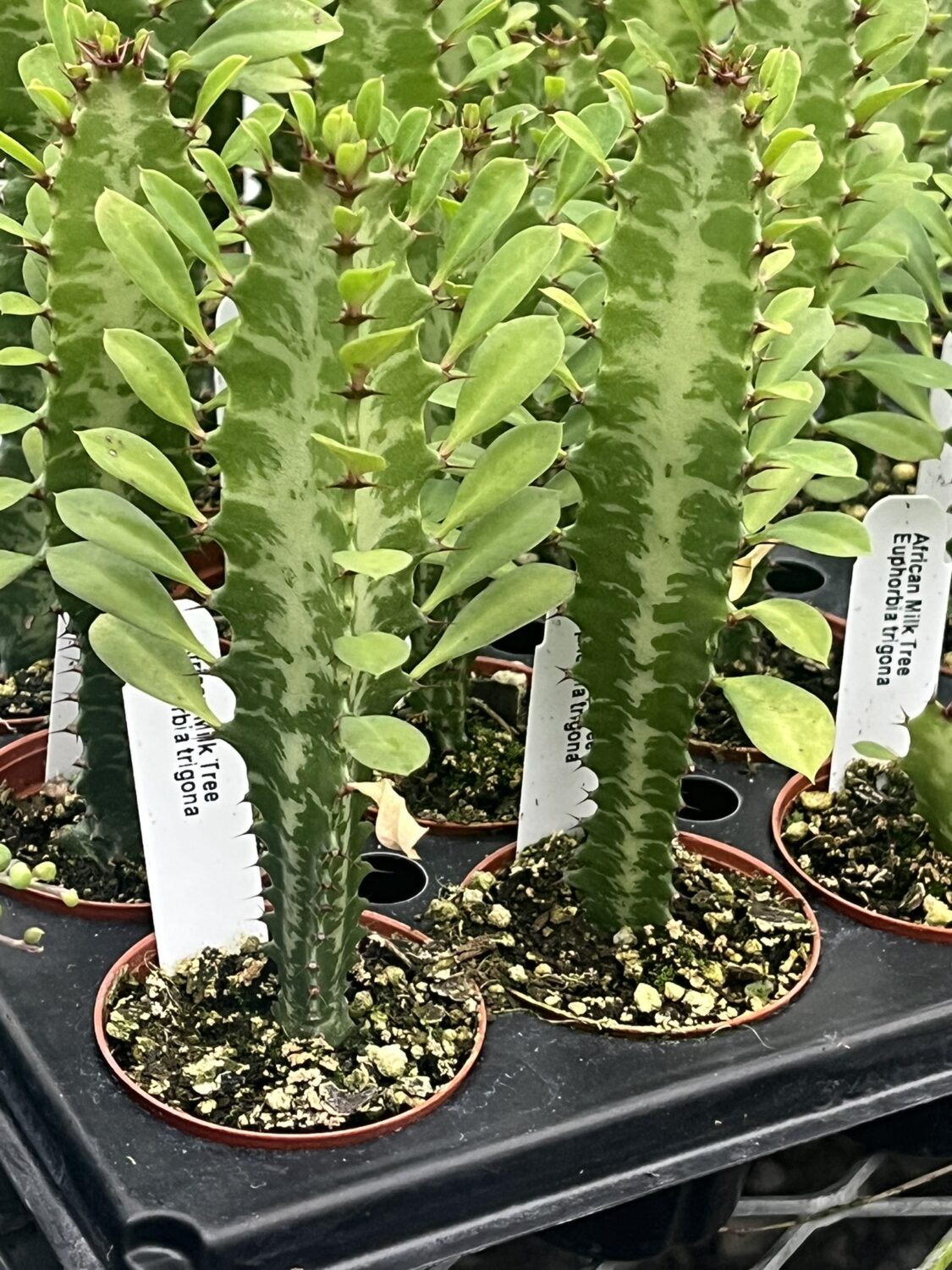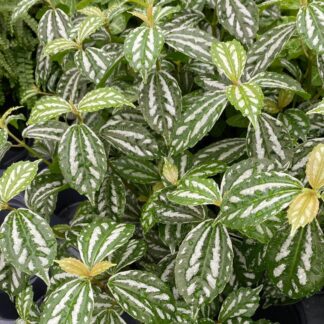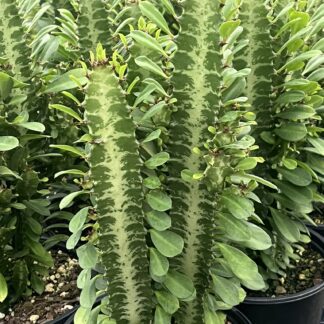Description
Euphorbia trigona ‘African Milk Tree’: A Complete, Easy-to-Follow Guide to Growing and Loving This Unique Succulent
If you’ve ever dreamed of adding a bold, low-maintenance plant to your collection—something with style, strength, and just a hint of wild charm—let me introduce you to Euphorbia trigona, also known as the African Milk Tree. With its tall, upright shape, quirky little leaves, and a silhouette that almost looks like modern art, this plant is pure magic for both beginners and seasoned growers.
And the best part?
It’s as easy to care for as it is beautiful. Whether you’re creating a mini desert garden or just need something to jazz up your living room, Euphorbia trigona can do the job—with barely any fuss.
So, let’s dig in! We’re about to explore everything you need to know about growing, caring for, and enjoying this one-of-a-kind succulent.
🌍 Where Does Euphorbia trigona Come From?
Despite the name “African Milk Tree,” it’s not actually a tree—and definitely not related to milk! It’s a fast-growing succulent shrub from Central Africa, where the sun is strong and the soil is dry.
In the wild, it can grow up to 8 feet tall. Indoors, it usually stays a bit smaller—but still stands tall, proud, and striking.
Its triangular green stems have three ridged sides. Along each ridge, you’ll find small, teardrop-shaped leaves and short spines. The overall look? Clean lines, cool geometry, and serious character.
There’s also a gorgeous red version called ‘Rubra’ or ‘Royal Red’, which shows off deep burgundy tones, especially in bright light. It’s like the plant version of velvet and drama combined!
💚 Why People Love the African Milk Tree
This succulent is more than just a pretty face. Here’s why so many people fall in love with Euphorbia trigona:
-
Striking Shape – Tall and upright, it brings a vertical lift to any space.
-
Easy to Grow – It’s a dream plant for busy folks or forgetful waterers.
-
Low Maintenance – Doesn’t ask for much. Really.
-
Air Friendly – Like many succulents, it helps clean the air.
-
Long-Lived – With a little love, it can stick around for decades!
Plus, it’s an excellent conversation starter. People will ask about it when they see it in your home or garden.
🪴 How to Grow Euphorbia trigona: Step-by-Step
Let’s get your African Milk Tree off to a strong start.
1. 🌞 Pick the Perfect Spot
Light is key! Euphorbia trigona loves bright, indirect light. That means:
-
Indoors: Near a sunny south- or east-facing window is ideal.
-
Outdoors: Place it in full sun to part shade. In really hot areas, give it some afternoon shade to prevent burns.
No light? No luck. This plant won’t do well in dark corners.
2. 🌱 Choose the Right Soil
Like all succulents, this one needs well-draining soil. Wet feet = root rot. So let’s build the perfect mix:
DIY Succulent Soil:
-
2 parts cactus potting soil or regular potting mix
-
1 part sand
-
1 part perlite or pumice
This combo keeps the roots happy and dry.
3. 🪴 Time to Plant
Pot or ground—it’s your choice. Just make sure you:
-
Use a pot with drainage holes.
-
Plant it so the base sits just above the soil line.
-
Don’t bury it too deep.
Gently loosen the roots before placing it in the soil, and press down lightly to secure.
4. 💧 Watering the Right Way
Watering is where most people go wrong. But don’t worry—I’ve got you!
Here’s what you need to know:
-
Let it dry: Always wait until the soil is fully dry before watering again.
-
Deep soak: Water thoroughly and let the extra drain out.
-
Winter break: In colder months, the plant rests. Cut watering way back.
Overwatering signs? Yellow, mushy stems. If you see that, stop watering and let it dry out completely.
5. 🌡️ Keep It Warm and Cozy
Euphorbia trigona likes it warm. Think 65–75°F (18–24°C). It’s not frost-tolerant, so if you live where it gets chilly:
-
Bring it indoors when temps fall below 50°F (10°C).
-
Keep it away from cold windows or drafty doors.
Humidity? Not a big deal. This plant is totally fine in dry air.
6. 🌼 Feed for Growth
During the growing season—spring and summer—give it a monthly treat:
-
Use a balanced, water-soluble fertilizer.
-
Dilute it to half strength to avoid overfeeding.
No need to fertilize in fall or winter. Let the plant rest.
7. ✂️ Prune and Maintain
Sometimes Euphorbia trigona can get a little wild. That’s when you prune.
How to prune:
-
Wear gloves (the sap is irritating).
-
Use clean, sharp scissors or shears.
-
Cut above a ridge, and let the wound dry before watering.
Pruning helps shape the plant and encourages branching.
🌱 How to Propagate Euphorbia trigona
Want to grow more from your plant? It’s super simple!
Step-by-Step:
-
Pick a healthy stem: Choose a firm, green one.
-
Cut cleanly: Use a sterile knife or shears.
-
Let it dry: Place the cutting in a dry spot for 2–3 days. This forms a callous.
-
Plant it: Insert into well-draining soil.
-
Water sparingly: Just a light mist until roots develop.
Place in bright, indirect light—and give it a few weeks. Soon you’ll have a baby Milk Tree of your own!
🐛 Common Problems (and Easy Fixes)
Euphorbia trigona is tough, but here’s what to watch for:
-
Mealybugs or spider mites – Look for white fuzz or tiny webs. Treat with insecticidal soap or neem oil.
-
Root rot – Caused by overwatering. Fix by letting soil dry completely and repotting if needed.
-
Sunburn – Brown patches on stems mean too much sun. Move it to a shadier spot.
Stay observant, and you’ll catch any issues early!
🏡 Styling and Display Ideas
This plant is a natural design element. Here’s how to show it off:
-
Indoors: Let it shine in a modern living room, home office, or bright hallway.
-
Containers: Pair it with trailing succulents or decorative stones.
-
Outdoors: Use in desert-style landscapes with other cacti and low-water plants.
It looks great solo or in a group—and adds instant structure wherever it lives.
⚠️ A Note About Safety
The sap of Euphorbia trigona is mildly toxic. It can irritate skin and eyes, and it’s not safe to eat. So:
-
Wear gloves when pruning or propagating.
-
Keep away from pets and children.
-
If sap touches skin, wash immediately with soap and water.
A little care goes a long way!
🌟 The Joy of Growing Euphorbia trigona
Growing the African Milk Tree is like watching a living sculpture rise and stretch over time. It brings beauty, calm, and that special spark only plants can give.
And the best part?
It asks so little in return.
With just a bright spot, some dry soil, and a bit of attention now and then, this plant can thrive for decades. It might even become a plant you pass down to someone you love.
So if you’re looking for a plant that stands tall, lives long, and turns heads—Euphorbia trigona might just be the one for you.
Ready to bring one home? Happy growing! 🌿






